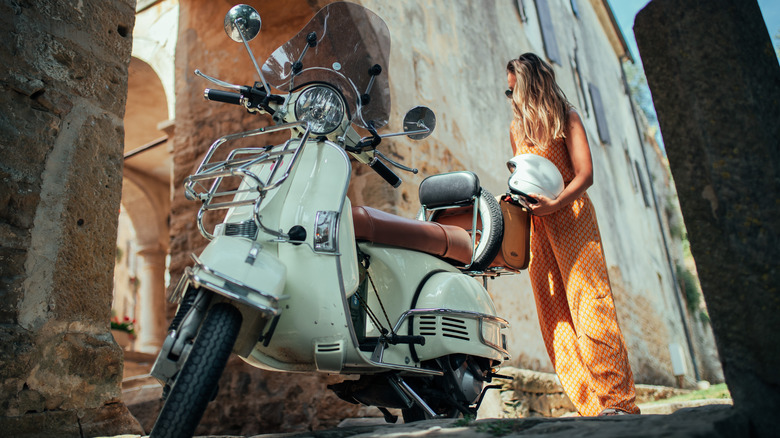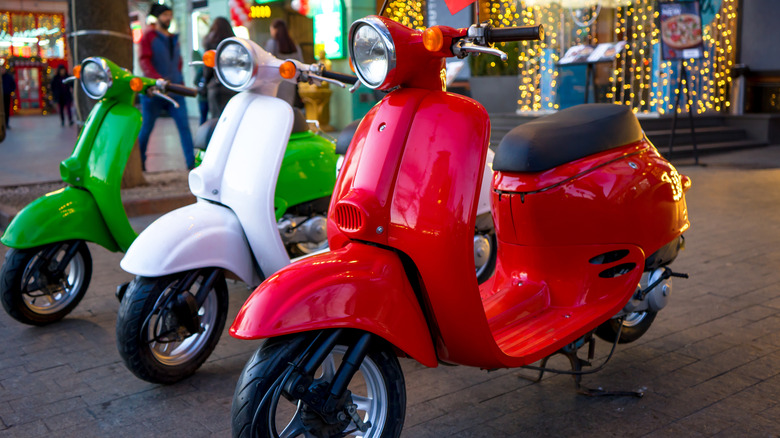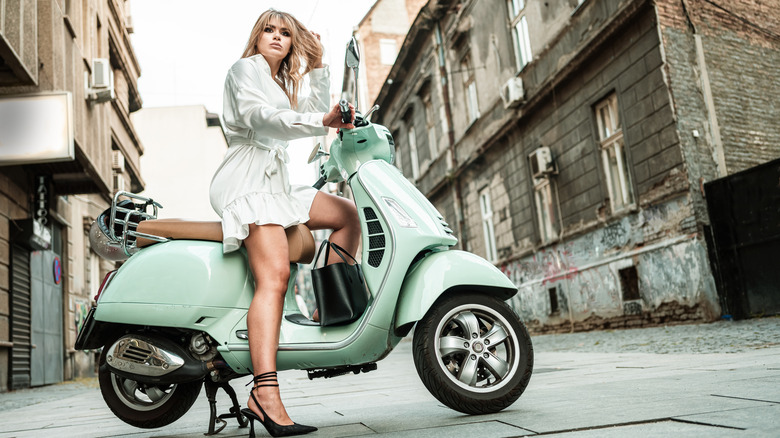A Vespa Isn't A Motorcycle: Here's Why
As one of the most popular Italian brands, Vespa is one of the most recognizable in the world with its contoured, timeless, and chic design. Its popularity has gone beyond the confines of its industry, and the Vespa has also become a lifestyle symbol of sorts. It is certainly one of the most popular two-wheeled city slickers in the world, even to this day, as the brand continues to tap into new markets such as the electric scooter crowd. However, despite having similar core designs, why is the Vespa not considered a motorcycle?
Ask around rider circles, and more often than not, they won't group a Vespa with well-known motorcycle brands. Basically, Vespas fall under the scooter category, and while a Vespa does feature two wheels and an engine, that is pretty much where the similarities end. We will be putting this question to rest once and for all as we point out the reasons why a Vespa simply isn't a motorcycle in the traditional sense.
The anatomy of a vespa and what sets it apart from traditional motorcycles
The first Vespa model debuted in 1946 and featured a chill 98-cc engine and a robust monocoque snail shell-like steel frame that looked practical and stylish. Named after the Italian word for "wasp" due to the distinct hum of its engine, the first-generation Vespas were specifically designed for use in a bustling city. The main difference between a Vespa and a motorcycle is the body design. Vespas and scooters incorporate a step-through design. This allows the rider to position their legs in front of their bodies and rest their feet on the bottom platform, as if sitting on a chair. Conversely, riders will need to straddle the motorcycle.
A Vespa will have its engines installed under the seats near the rear wheel, as is the standard design of a scooter. A motorcycle will have its engine mounted somewhere in the middle, or more forward.
Due to the Vespa's engine placement, it tends to have a significantly lower center of gravity than a motorbike and will provide the rider with more balance when at a standstill, and easier maneuvering around zig-zagging tight corners at slower speed.
Vespa's unique niche in the market
In regards to the Vespa's standing in the industry, it is certainly at the very top of the scooter hierarchy and is often considered one of the most recognizable names in that market. Throughout its history, Piaggio has carefully positioned Vespa to be a fashion statement as well as a scooter, and it is now one of the most renowned Italian brand names in the world.
Vespa has certainly built a reputation that goes against the standard motorcycle appeal, and instead focuses specifically on a stylish city commute experience. Compared to motorcycles with a wider range of uses such as long-distance rides and off-road exploration, Vespa has become more of a fashion statement as a chic and classy way of navigating the urban jungle in style. All in all, while Vespas and motorcycles share similar fundamental design features, such as having two wheels and handlebars, the difference starts becoming obvious in their performance, design, technical specifications, and, above all, application. A Vespa is not a motorcycle — it has become a lifestyle, and it is certainly proud of that distinction.


